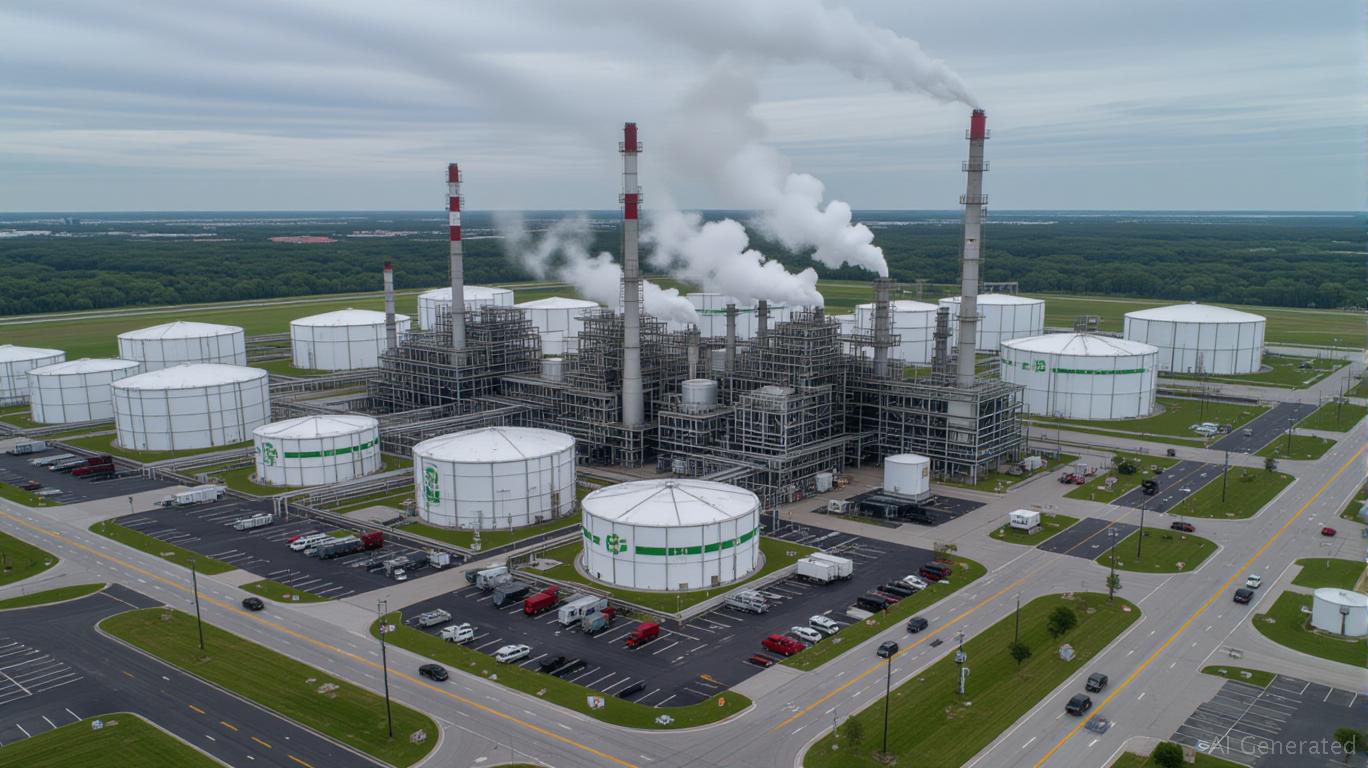BP's Strategic Reset: A Bold Gamble on Fossil Fuels or a Path to Sustainable Returns?
BP's dramatic pivot from its net-zero ambitions to a renewed focus on hydrocarbons and shareholder returns has sparked intense debate. Activist investor Elliott Management's 5% stake and demands for financial discipline have forced
to abandon its climate targets, redirect capital to oil and gas, and slash costs. This strategic reset, announced in February 2025, represents a high-stakes gamble. The question for investors is whether this pivot can deliver sustained value or merely delay the inevitable transition to cleaner energy.The Catalyst: Activist Pressure and Strategic Shift
Elliott Management's involvement marked a turning point. By demanding cost cuts, asset sales, and a focus on shareholder returns, the firm pushed BP to abandon its 2050 net-zero goals and pivot toward its core strengths: oil, gas, and operational efficiency. Under CEO Murray Auchincloss, BP has set aggressive targets: reducing annual spending by $4–5 billion by 2027, cutting net debt from $27 billion to $14–18 billion, and divesting $20 billion in non-core assets—including the potential $8 billion sale of its Castrol lubricants division.
This shift reflects a stark departure from BP's earlier strategy, which prioritized renewables and carbon-neutral projects. The exodus of Executive Vice President Giulia Chierchia, who oversaw sustainability efforts, underscores the move away from green initiatives. Meanwhile, the impending replacement of Chairman Helge Lund signals a leadership transition that could determine whether BP balances activist demands with long-term risks.

The Pivot to Fossil Fuels: Costs, Assets, and Risks
BP's financial restructuring hinges on cost discipline and asset sales. The company aims to cut capital expenditures to $14.5 billion in 2025, while targeting $20 billion in divestments by 2027. The Castrol sale, expected to generate $8 billion, is a linchpin for debt reduction. However, risks abound: delays in asset sales or weaker-than-expected valuations could strain liquidity.
Operational execution is equally critical. BP plans to start 10 major upstream projects by 2027, including the Cypre development in Trinidad and LNG projects in Mauritania and Senegal. These projects aim to boost production by 50,000 barrels per day in 2025. Yet, rising net debt (now at $27 billion) and weak refining margins have already dented profitability: Q1 2025 profits fell 49% to $1.4 billion.
Financial Performance and Shareholder Returns
Despite the profit decline, BP's shares have shown resilience, rising 4.75% after Elliott's stake was disclosed. This reflects investor optimism about the strategic reset's potential. The company has prioritized returns: maintaining an 8-cent-per-share dividend and completing $1.75 billion in buybacks in early 2025. However, its stock trades at a 20% discount to peers since 2020, underscoring lingering skepticism.
The key to unlocking value lies in executing the reset. If BP meets its $15 billion asset-sale target by 2026 and achieves cost-cutting goals, it could boost cash flow and reduce debt. A stock price rebound to consensus targets ($33.71) is possible—but hinges on oil prices and operational stability.
Operational Challenges and Market Dynamics
BP faces headwinds from volatile oil prices and refining margins, which have plagued its downstream business. Q1 2025 refining losses highlighted the sector's fragility, while geopolitical risks—such as sanctions on Russian oil—add uncertainty. Meanwhile, the upcoming leadership transition could tilt the company toward either short-term gains (as favored by MacKenzie, a potential chairman candidate) or a more balanced approach (advocated by Laidlaw).
ESG and Long-Term Risks
The pivot has drawn fire from ESG investors and environmental groups, who view BP's retreat from renewables as a betrayal of climate commitments. BP's decision to scale back low-carbon investments risks long-term reputational damage and regulatory penalties in green-forward markets. While the company retains some renewable projects—such as its offshore wind JV with JERA—the strategic reset's emphasis on hydrocarbons signals a bet that oil demand will remain robust.
This stance ignores global trends: the EU's carbon border tax, U.S. Inflation Reduction Act incentives for renewables, and China's push for energy independence all threaten hydrocarbon-heavy business models. BP's $27 billion net debt and legacy liabilities (e.g., Deepwater Horizon) further complicate its ability to adapt.
Investment Considerations: Bull vs. Bear Case
- Bull Case: Asset sales proceed smoothly, oil prices stabilize above $80/barrel, and cost cuts boost margins. BP's upstream efficiency and project execution could deliver 2027 net debt targets, lifting the stock toward $34. A dividend hike and buybacks would further reward investors.
- Bear Case: Asset sales stall, oil prices crash, or governance disputes erupt. Weak refining margins and rising net debt could trigger downgrades, pushing the stock below $20.
Conclusion: Balancing Immediate Gains and Long-Term Viability
BP's strategic reset is a necessary response to activist pressure and shareholder demands for returns. However, its success depends on navigating a precarious balancing act: delivering near-term financial discipline while avoiding long-term pitfalls like regulatory backlash and energy transition risks.
For investors, BP presents a speculative opportunity. Those with a short-term horizon and tolerance for volatility might consider a position ahead of Q3 results or Castrol's sale, aiming for a $30–$34 price target. However, the broader energy transition remains an existential threat. Until BP demonstrates a credible plan to align with global decarbonization goals, its value creation potential will remain limited.
In the end, BP's reset is a high-risk bet on fossil fuels—a gamble that could pay off in the near term but may prove unsustainable in the long run.
Disclaimer: This analysis is for informational purposes only and does not constitute financial advice. Always consult a professional before making investment decisions.
Sign up for free to continue reading
By continuing, I agree to the
Market Data Terms of Service and Privacy Statement

Comments
No comments yet